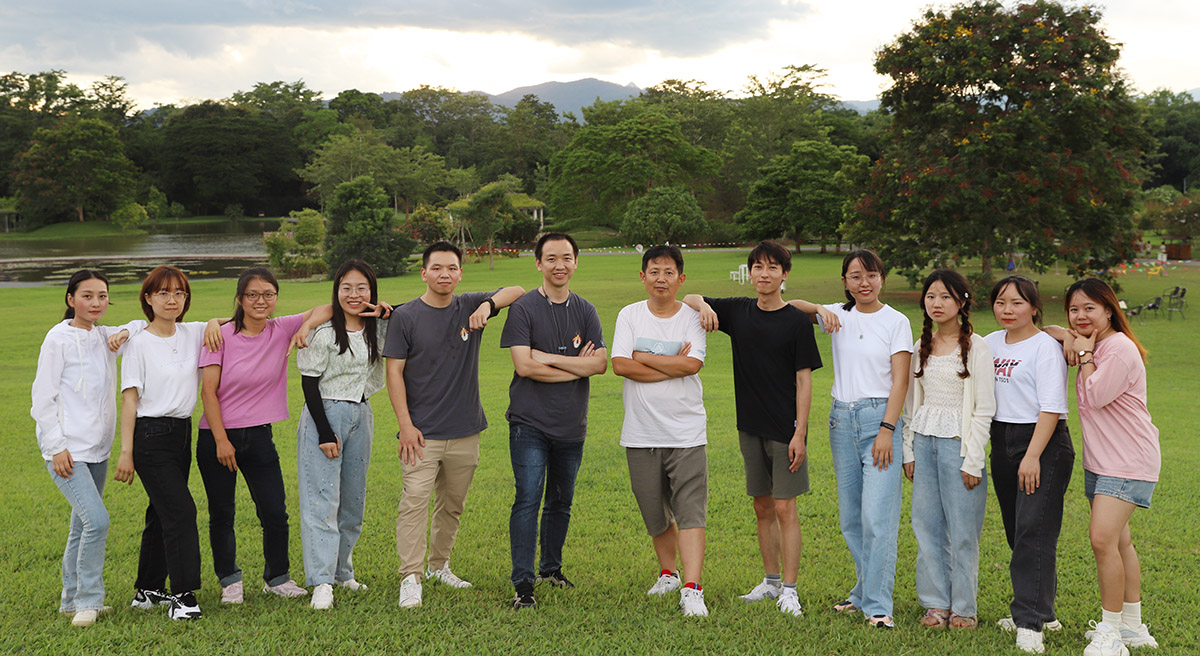
Group Leader: Prof.WANG Gang
We focus on question of “how plant-animal coevolution influence the traits evolution and species diversity”. Multiple ecological and evolutionary methods and analyses, from pollination biology, insect behavior, chemical ecology, meta-analysis, phylogeny and multiple-omics, will be used if necessary, to solve the question. We mainly taken fig-fig wasp-other animals as system.
Current researches including:
1) Geographic mosaic effect on fig-fig wasp coevolution.
2) Pollinator host-switches and figs hybridization along fig-fig wasp coevolution.
3) Co-diversification history of multiple figs related animals.
4) Evolutionary drivers and molecular mechanism of several important fig traits, e.g., sex system, stranger figs, cauliflory and pollination model, under the eco-evo and multiple-omics views.
5) Coevolutionary studies in other systems with interesting focus on the ecology and evolutionary outcome of interaction of multiple-interactions.
(Application for Master, PhD degree, and Post-Doctors are opening, wanggang@xtbg.org.cn)
Direction:
Ecology and Evolution
Article (Until 2021-01-06, ### Co-first author, ***(Co-)corresponding author)
1. Wang Gang ### , Zhang Xingtan ###, Edward Allen Herre, Doyle McKey, Carlos A. Machado, Yu Wen-Bin, Charles H. Cannon, Michael L. Arnold, Rodrigo A.S. Pereira, Ray Ming, Yi-Fei Liu, YibinWang, Dongna Ma, Jin Chen.*** . (2021), Genomic evidence of prevalent hybridization throughout the evolutionary history of the fig-wasp pollination mutualism. Nature Communications (Accepted).
2. Zhan, X.###, Wang G..###, Zhang S., S. Chen, Y. Wang, P. Wen, X. Ma, Y. Shi, R. Qi, Y. Yang, Z. Liao, J. Lin, J. Lin, X. Xu, X. Chen, X. Xu, F. Deng, L. Zhao, Y.-l. Lee, R. Wang, X.-Y. Chen, Y.-r. Lin, J. Zhang, H. Tang, J. Chen*** and R. Ming*** (2020). Genomes of the Banyan Tree and Pollinator Wasp Provide Insights into Fig-Wasp Coevolution. Cell 183: 875–889. (Cover story)
3. 牛山, 夏尚文***, 王刚, 杨效东 (2020). 半附生榕树和非附生榕树的细根性状 (Fine root traits of hemiepiphytic and non-epiphytic Ficus tree species). 生态学杂志 39, 715-722.
4. Wang R, Chen X.-Y, Chen Y, Wang G, Dunn, DW, Quinnell RJ, and Compton SG*. (2019). Loss of top-down biotic interactions changes the relative benefits for obligate mutualists. Proceedings of the Royal Society of London B: Biological Sciences 286.
5. Liu J, Zhao J, Wang G, and Chen J***. (2019). Host identity and phylogeny shape the foliar endophytic fungal assemblages of Ficus. Ecology and Evolution 9, 10472-10482.
6. 肖雪, 王刚, & 陈进***. (2017). 鸡嗉子榕果实和妃延腹榕小蜂性状的地理马赛克分化动力初析 (Drivers of phenotypes geographic mosaic patterns between Ficus semicordata and Philotrypesis dunia). 云南大学学报(自然科学版), 39(5), 900-907. doi:10.7540/j.ynu.20170196
7. Wang G, Cannon CH, & Chen J***. (2016) Pollinator sharing and gene flow among closely related sympatric dioecious fig taxa. Proceedings of the Royal Society of London B: Biological Sciences 283(1828).
8. Zhang FP, Yang QY, Wang G, & Zhang SB*** (2016) Multiple functions of volatiles in flowers and leaves of Elsholtzia rugulosa (Lamiaceae) from southwestern China. Scientific Reports 6.
9. Yan J, Wang G, Sui Y, Wang M, & Zhang L*** (2016) Pollinator responses to floral colour change, nectar, and scent promote reproductive fitness in Quisqualis indica (Combretaceae). Scientific Reports 6:24408.
10. Wang G, Chen J, Li ZB, Zhang FP, & Yang DR.*** (2014) Has pollination mode shaped the evolution of Ficus pollen? PLoS One 9(1): e86231.
11. Wang G, Compton SG, Chen J.*** (2013) The mechanism of pollinator specificity between two sympatric fig varieties: a combination of olfactory signals and contact cues. Annals of Botany 111: 173-181.
12. Wang B, Wang G, Chen J.*** (2012) Scatter-hoarding rodents use different foraging strategies for seeds from different plant species. Plant Ecology 213: 1329-1336.

